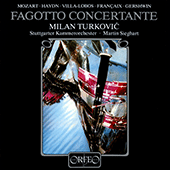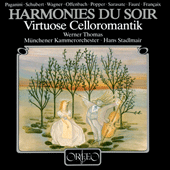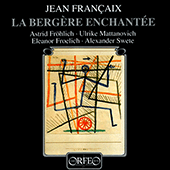
Jean Françaix (1912 - 1997)
A composer of great facility and consistent wit, Jean Françaix, a pupil of Nadia Boulanger, wrote music of charm and elegance, inventive and attractive in idiom, with instrumental works that show the characteristic French handling of woodwind instruments.
Stage Works
The fifth of the operas of Jean Françaix, La Princesse de Clèves, exemplifies his qualities as a composer, heard also in his various ballet and film scores.
Orchestral Music
The Piano Concertino of 1932, written while Françaix was a student, won immediate popularity. Other concertos include a Piano Concerto, a Two-Piano Concerto, a Violin Concertino and concertos for clarinet and for flute, as well as a number of other works making use of varied groups of solo instruments.
Chamber Music
There is particularly idiomatic handling of wind instruments in a number of Françaix’s works for instrumental ensemble, including a Saxophone Quartet. There is a Sonatine for violin and piano and a Sonatina for trumpet and piano, while the Neuf Pièces charactéristiques for ten wind instruments have a particular charm. Le Colloque des deux perruches (‘The Conversation of Two Parrots’) makes a witty exploration of the possibilities of flute and alto flute.
Keyboard Music
Keyboard music by Françaix includes L’insectarium for harpsichord, Huit Danses exotiques for two pianos, a Marche solennelle for organ, and a Piano Sonata.
Vocal and Choral Music
Solo vocal and choral settings by Françaix range from an oratorio, L’Apocalypse de St Jean, to a cantata for mezzo-soprano and strings, Déploration de Tonton, chien fidèle (‘Lament for Tonton, faithful dog’), and include settings of La Fontaine and Rabelais.


















